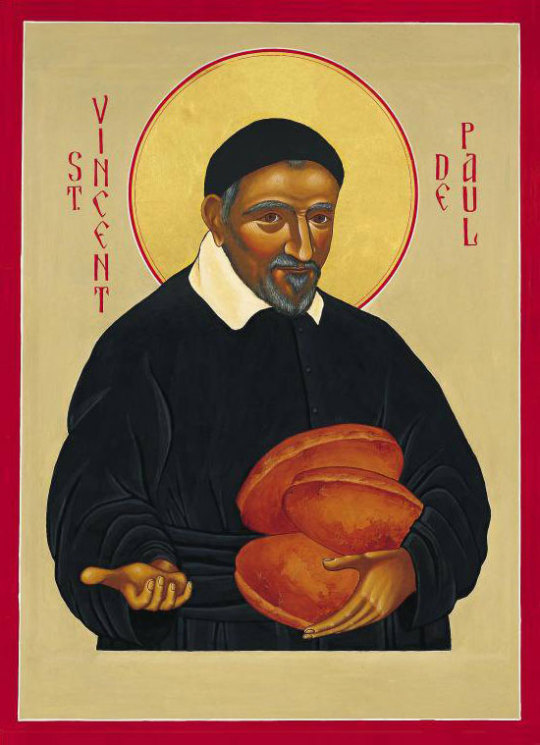#saint kateri tekakwitha
Text

The only known portrait from life of St Kateri Tekakwitha, the first Native American to be canonized. She was known for her severe penances and refusal of marriage, declaring she wished only to marry Jesus Christ. Happy #IndigenousPeoplesDay! Saint #KateriTekakwitha, pray for us!
4 notes
·
View notes
Photo


Today’s Reflection
Yesterday, we heard Jesus praise the childlike, for they came to know the Kingdom of God. Yet in our world today, this childlike knowledge has become a place individualism with our many devices where we watch movies, use social media, or play games. However, this is not new, for a similar wave of individualism occurred with Isaiah from our first reading. Still there is hope, for a remnant exists with Isiah who points to God who brings to the remnant peace. This is true for us as well, for the Church and religious communities, are important, for they are the yoke of Jesus in which people come to find hope by resting from their burdens of everyday life and this bring to our world a measure of peace.
Today’s Spiritual Links for July 14, 2022
Today’s Mass Readings
Today’s Reflection
The Holy Rosary
Liturgy of the Hours
New American Bible
Non-Scriptural Reading
Prime Matters
Church Life Journal
Simply Catholic
Catholic Answers
US Conference of Catholic Bishops
3 notes
·
View notes
Photo

07/15/2022
Don’t try this at home!
___
JOKE-OGRAPHY:
1. St. Kateri was often sick and used to hurt herself in small ways as a form of devotion. According to the articles I read, she'd taint her food with foul-tasting flavors, sleep on thorns, and in at least one instance, burned herself. This (according to the articles) was due in part to her Mohawk upbringing, as her tribe believed in a kind of spiritual strength earned through self-mortification. If the articles are right about that, then when Kateri converted and continued these practices, she was taking the spiritual techniques of her old culture and reorienting them toward her new faith. Eventually, however, her Jesuit spiritual director got worried for her health and ordered her to get his approval for any future penances. Probably for the best.
2. In the last panel, Kateri says that some people probably think her laying on thorns is pointless (as in "without purpose"), but she begs to differ, because the thorns themselves have physical points (as in the sharp pointy bits that poke her), and her suffering has a point as well (as in a purpose; in her mind, the suffering brings her closer to God, the noblest of purposes).
#saints#saint#st kateri tekakwitha#catholic#christian#indian#native american#mohawk#jesuit#just straight up stabbing yourself as a form of devotion to god
198 notes
·
View notes
Text


About St Joan of Arc
About St Kateri Tekakwitha
Post-Schism Saints Round 2 Winners/Round 3 Bracket
#st joan of arc#st kateri tekakwitha#catholic saint tournament#tumblr bracket#polls#tumblr tournament#theology#tumblr polls#christianity#catholic saints#catholicism#catholic
27 notes
·
View notes
Note
Do you have any images that portray St. Kateri more accurately?
I'm going to take this opportunity to respond to your earlier question re: diet as well. Kateri's avoidance of meat was not, in itself, a penitential practice, but it was intimately related to her celibacy, since in Haudenosaunee culture at that time access to venison had a lot to do with a man's, a husband's, role in the family structure. Without a husband Kateri would have had to scrounge for the results of the seasonal hunts rather than having implied access to them. The one time she went on one of the hunts herself, in the winter of 1677-8, was a traumatic experience for her (not for reasons related to hunting qua hunting; she was accused of sexual impropriety and it took weeks to clear her name).
Here's the only painting of her by someone who knew her in life, Father Claude Chauchetière SJ. Note that during her lifetime she would also have had a heavily scarred face from a childhood case of smallpox; this portrait represents her appearance in apparitions shortly after her death.

Note that she appears to have long, loose hair, but is covering it with a heavy blanket or mantle. The dress is also a bit more similar to conventional Euro womenswear than the "braids-and-buckskins" pan-Indian look she's conventionally depicted with today. This isn't necessarily due to European influence, although that is a possibility; Haudenosaunee women in this period seem to have dressed more or less like this in general.
14 notes
·
View notes
Photo

Happy Feast Day
Saint Kateri Tekakwitha
1656-1680
Feast Day: July 14
Patroness: Ecologists, Native Americans
Saint Kateri Tekakwitha, known as Lily of the Mohawks was an Algonquin–Mohawk virgin. Born in Auriesville (now part of New York), she was orphaned during a smallpox epidemic, which left her with a scarred face and impaired eyesight. In 1676 she was converted and baptized by Father Jacques de Lamberville, a Jesuit missionary. Shunned by her tribe for her faith, she escaped through 200 miles of wilderness to the Christian Native American village of Sault-Sainte-Marie. Kateri was known for her spirituality and austere lifestyle. Various miracles and supernatural events are attributed to her intercession.
{website}
#St Kateri Tekakwitha#American Indian saint#Native American Saint#Saint for Ecologist#artist on tumblr
119 notes
·
View notes
Text

St. Kateri Tekakwitha (also known as Lily of the Mohawks)
Algonquin and Mohawk woman
Patron Saint of Native Americans
Born 1656 in Auriesville, NY
Died April 17, 1680 in Kahnawá:ke, Quebec, Canada
Canonized: October 21, 2012 by Pope Benedict XVI
Feast Day July 14
Saint Kateri Tekakwitha is the first Native American to be canonized a saint. She was born in the Mohawk village of Ossernenon now called Auriesville in New York. Her mother was Algonquin who was captured by the Mohawks and took the Mohawk chief for a husband. Kateri contracted smallpox as a four year old child. The smallpox scarred her face. The scars were a source of humiliation for her in her youth that she was seen wearing a blanket to hide her face. Kateri's entire family died during the outbreak of smallpox. She went to live with her uncle who was then the Mohawk chief. At age 19, Kateri Tekakwitha converted to Catholicism, taking a vow of chastity and renouncing marriage pledging to marry only Jesus Christ. Kateri became the target of rumors spread by her clan due to her vow to marry only Jesus. To escape persecution she fled to a Christian native community south of Montreal. Kateri was very devout and was known for her steadfast devotion. She was also very sickly. Her practices of self-mortification and denial may not have helped her health. Just five years after her conversion to Catholicism, she became ill and passed away from tuberculosis at age 24, on April 17, 1680. It was said that at her death Kateri’s face miraculously cleared up from the scarring caused by smallpox. Kateri Tekakwitha was canonized by Pope Benedict XVI on October 21, 2012.
2 notes
·
View notes
Text

25 notes
·
View notes
Text
SAINT OF THE DAY (July 14)

On July 14, the Church celebrates the feast day of St. Kateri Tekakwitha, the first Native American to be canonized.
Known as the "Lily of the Mohawks," Kateri lived a life of holiness and virtue, despite obstacles and opposition within her tribe.
Kateri was born in 1656 to a Christian Algonquin woman and a pagan Mohawk chief in Auriesville, New York.
When she was a child, a smallpox epidemic attacked her tribe and both her parents died. She was left with permanent scars on her face and impaired eyesight.
Her uncle, who had now become chief of the tribe, adopted her. Her aunts began planning her marriage while she was still very young.
In 1667, when three Jesuit fathers were visiting the tribe and staying in the tent of her uncle, they spoke to her of Christ.
Though she did not ask to be baptized, she believed in Jesus with an incredible intensity.
She also realized that she was called into an intimate union with God as a consecrated virgin.
Kateri had to struggle to maintain her faith amidst the opposition of her tribe who ridiculed her for it and ostracized her for refusing the marriage that had been planned for her.
When she was 18, Fr. Jacques de Lamberville returned to the Mohawk village, and she asked to be baptized.
The life of the Mohawk village had become violent and debauchery was commonplace.
Realizing that this was proving too dangerous to her life and her call to perpetual virginity, Kateri escaped to the town of Caughnawaga in Quebec, near Montreal, where she grew in holiness and devotion to the Blessed Sacrament.
Kateri lived out the last years of her short life here, practicing austere penance and constant prayer.
She was said to have reached the highest levels of mystical union with God. Many miracles were attributed to her while she was still alive.
She died on 17 April 1680 at the age of 24.
Witnesses reported that within minutes of her death, the scars from smallpox completely vanished and her face shone with radiant beauty.
Devotion to Kateri began immediately after her death. Her body, enshrined in Caughnawaga, is visited by many pilgrims each year.
She was beatified by Pope John Paul II on 22 June 1980. He was canonized by Pope Benedict XVI on 21 October 2012.
2 notes
·
View notes
Text

St. Kateri Tekakwitha at the shrine The Cross in the Woods in Michigan. She's my confirmation saint!
I discovered her in second grade and prayed for her canonization for years. the year before my confirmation she was officially declared a saint.
4 notes
·
View notes
Text
“Five Saints Saga”
The story follows Pietro, with no memory of his past, washes ashore where he is taken in by a group of unique individuals blessed with elemental powers and supernatural abilities. He meets James and John, the lively pranksters, Miss M, the astute debater, Cecilia, the reserved and insightful "flower," Kateri, the serious older sister, Maria, the witty illiterate, and Anna Wang, the introverted Chinese girl with limited speech. Adopted by Lorenzo and Marina, a devoted Asian couple, Pietro begins his journey with this eclectic group.
Adopted by Lorenzo and Marina, an Asian couple with strong parental instincts, Pietro embarks on a journey with The group. During a late night walk, one of the Black Seven, Elvire Sven, abducts Anna for sinister intentions. Vira Tsavf, leader of the Black Seven, harbors secret aspirations to rule over the Five Flags. Amidst their quest, the group experiences sporadic moments of "consciousness blackouts," hinting at their forgotten pasts. The prophecy foretells that the Five Saints will overthrow the Black Seven, and light shall prevail against the darkness. As the prophecy unfolds, Pietro and the others prepare to face the formidable Black Seven, all while uncovering their lost memories. In the gripping narrative, Lady Cecilia foresees the emergence of the nine new heroes who will be christened *The Five Saints*. Armed with elemental powers reflective of their individual personalities, they embark on a mission to rescue Anna Wang, dethrone the Black Seven, and establish a base of operations from which to wage a war against the forces of darkness. The question looms. Can Pietro and his companions harness the power of light to overthrow the shadow looming over their world?


#five saints saga fanfic novel#judeo-christian mythology#christiansaints#saintceciliaofrome#pedro calungsod#lorenzo ruiz#saint anna wang#st. maria goretti#mary magdelene#james and john the apostle#kateri tekakwitha#Black Seven#Five Saints#Light Versus Darkness#St Marina Of Omura
1 note
·
View note
Text

THE DESCRIPTION OF SAINT KATERI TEKAKWITHA
The Lily of the Mohawks and the Patron of Native Americans
Feast Day: April 17 (Canada), July 14 (United States)
"My Jesus, I must risk everything with You."
The blood of martyrs is the seed of saints. Nine years after the Jesuits Isaac Jogues and Jean de Lelande were tomahawked by Iroquois warriors, a baby girl was born near the place of their martyrdom, Auriesville, New York.
Her mother was a Christian Algonquin, taken captive by the Iroquois and given as wife to the chief of the Mohawk clan, the boldest and fiercest of the Five Nations. When she was four, Tekakwitha lost her parents and little brother in a smallpox epidemic that left her disfigured and half blind.
She was adopted by an uncle, who succeeded her father as chief.
He hated the coming of the Blackrobes—Jesuit missionaries—but could do nothing to them because a peace treaty with the French required their presence in villages with Christian captives. She was moved by the words of three Blackrobes who lodged with her uncle, but fear of him kept her from seeking instruction.
Tekakwitha refused to marry a Mohawk brave, and at 19 finally got the courage to take the step of converting. She was baptized with the name Kateri--Catherine--on Easter Sunday.
Now she would be treated as a slave. Because she would not work on Sunday, Kateri received no food that day. Her life in grace grew rapidly. She told a missionary that she often meditated on the great dignity of being baptized. She was powerfully moved by God’s love for human beings and saw the dignity of each of her people.
She was always in danger, for her conversion and holy life created great opposition. On the advice of a priest, Kateri stole away one night and began a 200-mile walking journey to a Christian Indian village at Sault St. Louis, near Montreal.
For three years she grew in holiness under the direction of a priest and an older Iroquois woman, giving herself totally to God in long hours of prayer, in charity, and in strenuous penance.
At 23, Kateri took a vow of virginity, an unprecedented act for an Indian woman whose future depended on being married. She found a place in the woods where she could pray an hour a day—and was accused of meeting a man there!
Her dedication to virginity was instinctive: Kateri did not know about religious life for women until she visited Montreal. Inspired by this, she and two friends wanted to start a community, but the local priest dissuaded her. She humbly accepted an 'ordinary' life.
She practiced extremely severe fasting as penance for the conversion of her nation.
Kateri Tekakwitha died the afternoon before Holy Thursday. Witnesses said that her emaciated face changed color and became like that of a healthy child. The lines of suffering, even the pockmarks, disappeared and the touch of a smile came upon her lips. She was beatified in 1980 and canonized in 2012.
Source: Franciscan Media
#random stuff#catholic#catholic saints#kateri tekakwitha#catalina tekakwitha#native americans#ecology#environment#united states#canada
1 note
·
View note
Text


Today’s Reflection
One of my greatest fears, upon ordination, was centered on hearing confessions and what I would say to a penitent after hearing their confession. Yet, eleven years later, my ministry is primarily that of hearing confessions and as for my fear of what I would say, this has not been a problem. For I know that the Holy Spirit is active in the confessional, because some of the things I have said to penitents I know has not come from me, yet it was always the right thing to say. For what Jesus said has come true, “[That] you will be given at that moment what you are to say. For it will not be you who speak but the Spirit of your Father speaking through you,” and this is always the truth. Therefore, we ought to hold on to God and not fear whatever the world may say, for if we trust God, all things will be okay and this ought to bring us hope.
Today’s Spiritual Links for July 14, 2023
Join the National Eucharistic Revival
Today’s Mass Readings
Today’s Reflection
The Holy Rosary
Liturgy of the Hours
New American Bible
Non-Scriptural Reading
Prime Matters
ACTS XXIX
1 note
·
View note
Text



SOME PIXELLY DRAWINGS OF SAINTS
Francis Solanus, Bibiana, Bernadette, Athanasius of Alexandria, Rita of Cascia, Charles de Foucauld, Rafqa, Pio of Pietrelcina, Moses the Black, Eulalia of Barcelona.
Valentine, Maximilian Kolbe, Clare of Assisi, Devasahayam Pillai, Thomas Aquinas, Dymphna, Faustina Kowalska, Maria Goretti, Quiteria, John the Baptist.
Judas Thaddeus, Teresa of Ávila, Joan of Arc, Óscar Romero, Francis of Assisi, Martín de Porres, Rosa of Lima, Juan Diego Cuāuhtlatoātzin, Kateri Tekakwitha, Catherine of Siena.
38 notes
·
View notes
Text


About St Kateri Tekakwitha
About St Vincent de Paul
#st kateri tekakwitha#st vincent de paul#christianity#tumblr bracket#tumblr tournament#catholic saints#theology#tumblr polls#catholicism#catholic#catholic saint tournament#polls
20 notes
·
View notes
Text






The jokes people make about virgin saints in general probably being literally true of Kateri Tekakwitha in particular: a compilation from primary sources.
12 notes
·
View notes